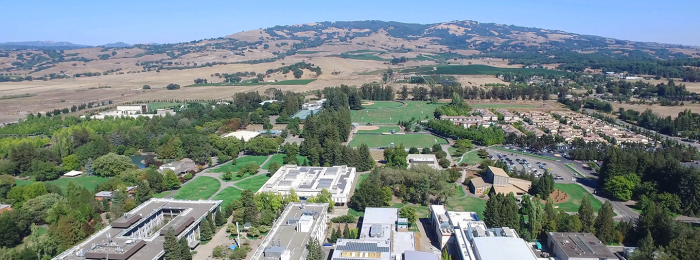
“Now in a moment I know what I am for.”
Walt Whitman. (1860). ‘Out of the Cradle Endlessly Rocking’ in Leaves of Grass
So you have finished your MBA. With only 3 years in the industry and with the Masters now ‘done’, the next step is a formal leadership role in your current organization or at the competitors. A couple of years, two or three maximum and you believe that you’ll be ready for a senior leadership role, possibly at the executive or director level. As far as your concerned, you’ve arrived and it’s time for the world to know it!
It might seem like an extreme scenario but it would be worth positing the thought that it is not as rare as we might think. It might not be a common occurrence but it’s not uncommon either and the phenomenon of ‘The Great Resignation’ may well have exacerbated it. According to a 2023 World Economic Forum report, “American adults have held down an average of 12 (jobs) by the time they’re 55. But now we’re entering an era in which most of us won’t just have one career, but many.”
There is much written about what leadership is and what it shouldn’t be, what qualities leaders should have and what they don’t need. It begs the question though as to what preparation is needed to advance into leadership positions within an organization? Is it sufficient to study a Masters degree in Business, Administration or Leadership and expect to land a leadership position upon graduation, with say under five years of experience in that industry? Should we be concerned at people who seem to be overly ambitious when it comes to leadership positions? After all the research and literature constantly highlight the relational nature of leadership. A highly experienced, well-regarded lawyer once said to me: “studying a law degree gave me the technical skills and knowledge to be a lawyer but it was my first law firm where I learnt the practice of law.” This is telling. Knowledge is important but so too is experience and being a ‘people-person’.
In preparing future leaders, it is perhaps pertinent to consider what might be needed to shape leaders of the future. The caveat of course is that such positions are usually won by merit (at interview).
An interesting place to start is with some research from Swinburne University of Technology (Victoria, Australia). It is home to the Australian Leadership Index, an index that regularly surveys about leadership across Government, Public and Private Companies, Higher Education, even Not-For Profits (e.g. Leadership of Charities). The research behind the index shows that people make judgements about leaders and leadership based on their perceptions of three areas.
“Overall perceptions of leadership are driven by a number of more granular judgements that people make about an institution’s perceived values, behaviours, and policies. Our research and statistical modelling has revealed that leadership judgements are formed on the basis of three distinct factors, each with their own set of criteria: integrity, contribution, and competence.”
Demsar, Vlad., Wilson, Samuel G., Wheeler, Melissa A. (ND). About ALI: Australian Leadership Index. Melbourne, Victoria: Swinburne University of Technology.
Of interest is their December 2022 report on how the institutions, captured in the Australian Leadership Index, measured up to Leadership expectations in 2022. Of the three drivers, the one that overwhelmingly required more attention was integrity, which includes ‘transparency, accountability and sustainability’.
“The main drag on leadership has been institutional integrity, with integrity issues plaguing governments, public institutions and the private sector alike. To get onto the nice list, institutions need to improve their commitment to and practice of integrity, as inferred by their transparency, accountability and sustainability. Part of this is having a clear purpose and vision and acting for the greater good – not just greater profit margins or seats in parliament.”
Demsar, Vlad., Wilson, Samuel G., Wheeler, Melissa A. (2022). The Australian Leadership Index’s Naughty Or Nice List: Who Met Leadership Expectations In 2022. Melbourne, Victoria: Swinburne University of Technology. p.3 of 4.
These drivers (integrity, contribution, and competence) are of course recurring ‘big rock’ themes that often turn up in the literature on leadership and should have a place in leadership preparation.
Leadership and leadership preparation is full of paradoxes, it is quite simple and complex at the same time. The recruitment process as far as possible should be looking to identify not just people of talent, expert knowledge and experience but people of integrity as well. The United States Government’s Office of Personnel Management has some excellent material around recruitment and what they expect leaders to be able to demonstrate. They name six ‘Fundamental Competencies’ that are expected to be found across all levels of leadership in federal government agencies. According to the Office of Personnel Management they are as follows:
Fundamental Competencies
These competencies are the foundation for success in each of the Executive Core Qualifications.
Interpersonal Skills:
Treats others with courtesy, sensitivity, and respect. Considers and responds appropriately to the needs and feelings of different people in different situations.
Oral Communication:
Makes clear and convincing oral presentations. Listens effectively; clarifies information as needed.
Integrity/Honesty:
Behaves in an honest, fair, and ethical manner. Shows consistency in words and actions. Models high standards of ethics.
Written Communication:
Writes in a clear, concise, organized, and convincing manner for the intended audience.
Continual Learning:
Assesses and recognizes own strengths and weaknesses; pursues self- development.
Public Service Motivation:
Shows a commitment to serve the public. Ensures that actions meet public needs; aligns organizational objectives and practices with public interests.
United States Office of Personnel Management. (2012). Guide To Senior Executive Service Qualifications. Washington DC: U.S. Office of Personnel Management. p.5.
What is interesting is that these ‘Fundamental Competencies’ seem to focus on two things: 1). The Leader and how they develop and care for themselves. 2) The leader’s interaction with other people, employees, clients and other stakeholders, including government. In other words, these ‘Fundamental Competencies’ are people focused and the last one, ‘Public Service Motivation’, is about seeing leadership as something that is at the service of others, not yourself. It would be reasonable to posit the idea that these are ‘Fundamemtal Competencies’ not just for agencies of the U.S. Government but of any organization. Further, the material and research from the Australian Leadership Index, would suggest that these are common themes across the world. It also reasonates with the longitudinal study by James Kouzes and Barry Posner in their exceptional book ‘The Leadership Challenge’ in which they unearthed after repeated surveys, the ‘Characteristics of Admired Leaders (CAL) Around the World’.
“For the majority of people to follow someone willingly, they want a leader who they believe is Honest, Competent, Inspiring, Forward-looking. In addition, these same four characteristics rank consistently at the top across different countries.”
Kouzes, James, M., Posner, Barry, Z. (2017). The Leadership Challenge (Sixth Edition) (eBook). Hoboken, New Jersey: John Wiley & Sons, Inc. p.42 of 331.
The fact that so many studies and so much of the literature keeps coming back to the same recurring themes, would suggest that ‘Leadership Development Programs’ should embed a focus on these fundamental / key competencies / attributes. The astute job applicant should also consider how they could highlight and exemplify these attributes in their resumé and job application. An implication of the research of Stephen M. R. Covey in his must read ‘Smart Trust’, is that an aspiring leader should be asked to evidence how they create and build trust in order to have influence and thus lead.
“In order to increase influence and grow trust in a team, an organization, a community, a family, or a relationship, someone has to take the first step. That’s what leaders do. They go first. They lead out in extending trust. In fact, the first job of a leader is to inspire trust, and the second is to extend it. This is true whether a person has a formal leadership role, such as CEO, manager, team leader, or parent, or an informal role of influence, such as work associate, marriage partner, or friend.”
Covey, Stephen. M. R., Link, Greg., Merrill, Rebecca, R. (2012). Smart trust: Creating prosperity, energy and joy in a low-trust world (eBook). London: Simon & Schuster. p192.


What this really comes down to is the notion of ‘Leader Character’, which in the literature should include people skills and the ability to engage personally with others. As Covey pointed out in the above quote, that must also include being a leader that can build trust and as a result inspire others to be the best iteration of themselves that they can be. Some recent research published in the MIT Sloan Managememt Review, detailed a ‘Leader Character Framework’ and the key elements that comprise such a framework. Centred on Judgement, the key elements are as follows.
Leaders Character Framework
- Judgment:
Situationally aware, cognitively complex, analytical, decisive, critical thinker, intuitive, insightful, pragmatic, adaptable.
- Transcendence:
Appreciative, inspired, purposive, optimistic, creative, future-oriented.
- Courage:
Brave, determined, tenacious, resilient, confident.
- Drive:
Passionate, vigorous, results-oriented, demonstrates initiative, strives for excellence.
- Accountability:
Takes ownership, accepts consequences, conscientious, responsible.
- Collaboration:
Cooperative, collegial, open-minded, flexible, interconnected.
- Justice:
Fair, equitable, proportionate, evenhanded, socially responsible.
- Humanity:
Considerate, empathetic, compassionate, magnanimous, forgiving.
- Temperance:
Patient, calm, composed, self-controlled, prudent.
- Humility:
Self-aware, modest, reflective, curious, continuous learner, respectful, grateful, vulnerable.
- Integrity:
Authentic, candid, transparent, principled, consistent.
Crossan, Mary., Furlong, William (Bill) and Austin, Robert, D. (2022). Make Leader Character Your Competitive Edge in MIT Sloan Management Review (October 19, 2022). Cambridge, Massachusetts: Massachusetts Institute of Technology.
Often organizations such as large government agencies, will have their own ‘Leadership Framerwork’. The extent that ‘Leader Character’ is viewed as an important ‘strategic’ asset will be known if it is embedded in the elements or components of the organization’s ‘Leadership Framework’. If it is barely there, then it most likely is not a priority. From a generic perspective, the ‘Leader Capability Framework’ gives well researched insights as to what might also be found in a ‘Leadership Development Program’. As the authors of the above study noted: “Leaders largely misunderstand the concept of character and think it’s just about ethics rather than foundational to judgment.” This gives a solid reason as to why they should be embeded into ‘Leadership Development Programs’ and it certainly provides a focus for interview panels and job applicants. Hiring the right person shouldn’t just involve the technical skillset that they have but the extent of their ‘Leader Chaeracter’ as well.
Typically, aspiring applicants, especially in the leadership space, will often undertake programs or courses that enhance their technical skillset or competency. This has a place, as does a focus on the so called ‘hard skills’. The focus on ‘hard skills’ in part occurs because often attainment is quantifiable. The truth is that the ‘hard skills’ are often soft and the ‘soft skills’ are much harder to achieve and thus often avoided until it becomes absolutely necessary. The lived reality is that the so called ‘soft skills’ are used on a daily basis. On the importance of ‘soft skills’, Tom Peters in his excellent book ‘Excellence Now: Extreme Humanism’, says it well.
“Soft (people / relationships / culture) is hard: The best “people practices” (caring, training, acknowledging) create the most wholesome, community-minded organizations—and win in the marketplace as well. Effective people practices, design that inspires, customers who are enthralled, vendors who bend over backwards to assist us are all byproducts of a supportive culture nurtured one day at a time.”
Peters, Tom. (2021). Excellence Now: Extreme Humanism (eBook). Chicago, Illinois: Networking Publishing. p42.
Of course leadership is best thought of as influence. If a leader doesn’t influence policies and procedures, if a leader doesn’t influence the thinking of the team or the organization, certainly if the leader doesn’t influence other people to do and to be their very best, then it would be hard to describe such a person as a leader. They certainly wouldn’t meet the different elements, described in this article as being core to leadership. People are more likely to buy-in to the leader that takes an interest in them and their work. The Tom Peters idea of ‘Managing by Wandering Around (MBWA)’ that “you lead by fully humanized interaction”, has currency here (see: Excellence Now: Extreme Humanism (eBook) p275).
This is also the recurring theme of the work of Mark C. Crowley in his must-read work ‘Leading From The Heart’. Crowley, like Peters maintains that leadership as a ‘fully humanized interaction’, is in fact an action of the heart. The leader that cares about others, the team, the customers, the suppliers is more likely to be successful, as will be the people they lead.
These Are The Four Practices of Leading From The Heart:
Hire People with Heart: Build a Highly Engaged Team
Heart to Heart: Connect on a Personal Level
Empower the Heart: Maximize Employee Potential
Inspire the Heart: Value and Honor Achievements
Crowley, Mark. C. (2022). Lead From The Heart: Transformational Leadership For The 21st Century (eBook). Carlsbad. California: Hay House, Inc. (Part III p7 of 7).
Straight up, Mark Crowley has provided leaders, HR managers and recruitment panels with four key questions that go to the heart of selecting excellent leaders, who are likely to have that something special, which might well be defined as ‘Leader Character’. If you take Crowley’s ‘Four Practices’ and turn them into the following questions, you will find that they lend themselves to concrete examples being required.
Some Questions from The Four Practices:
- How and when did you ‘build a highly engaged team’?
- Could you give two examples of how you ‘connect on a personal level’ with a team?
- What strategies have you employed to ‘maximize employee potential’? How do you know they were successful?
- Why is it important to ‘value and honor achievements’ and how have you done this?
Returning to the opening quote, the leader must know what they are for! For a person to be such a leader, the MBA mentioned in the opening paragraph is just one part of a complex puzzle. For a person to be such a leader, they must first be self-aware and that means understanding themselves in more than a superficial manner. It means studying and reading on a range of topics, not just those already in your skillset. It also means having a vibrant inner-life, whether through prayer, meditation, exercises in mindfulness or making use of coaching, in order to know what your ‘modus operandi’ as a leader is and why. You are more likely to model your expectations and be more adaptive and more approachable. It means working on yourself each day, as a leader and as a person, to be the very best iteration of yourself that you can be!
“The struggle of today, is not altogether for today — it is for a vast future also.”
Abraham Lincoln
First State of the Union Address (1861)
Abraham Lincoln, First Annual Message Online by Gerhard Peters and John T. Woolley, The American Presidency Project
Want new articles before they get published? Subscribe to our Awesome Newsletter.

CAREER ADVICE

GOV TALK




